BILL'S
[Somewhat] WEEKLY COLUMN/BLOG PAGE
BILL’S BACK IN TIME
By Bill Ladabouche
SOMETIMES RACING FOLKS
HIT A CROSSROAD BETWEEN SPORTS
In some cases, some of our best people in the history of stock car racing were
much better known in their home towns as stars from another sport. While this is
more of an exception than a rule – it does happen more than you think. There was
– for the longest time – a guy named Lou Lucier, whose claim to fame was being
the oldest living Boston Red Sox player. That same guy, who hailed from
Northhampton, Massachusetts, also appeared in the points standings of North
Bennington, Vermont's Stateline Speedway. One bio on him stated how he had a
strong interest in, and aptitude for, machine work on engines.
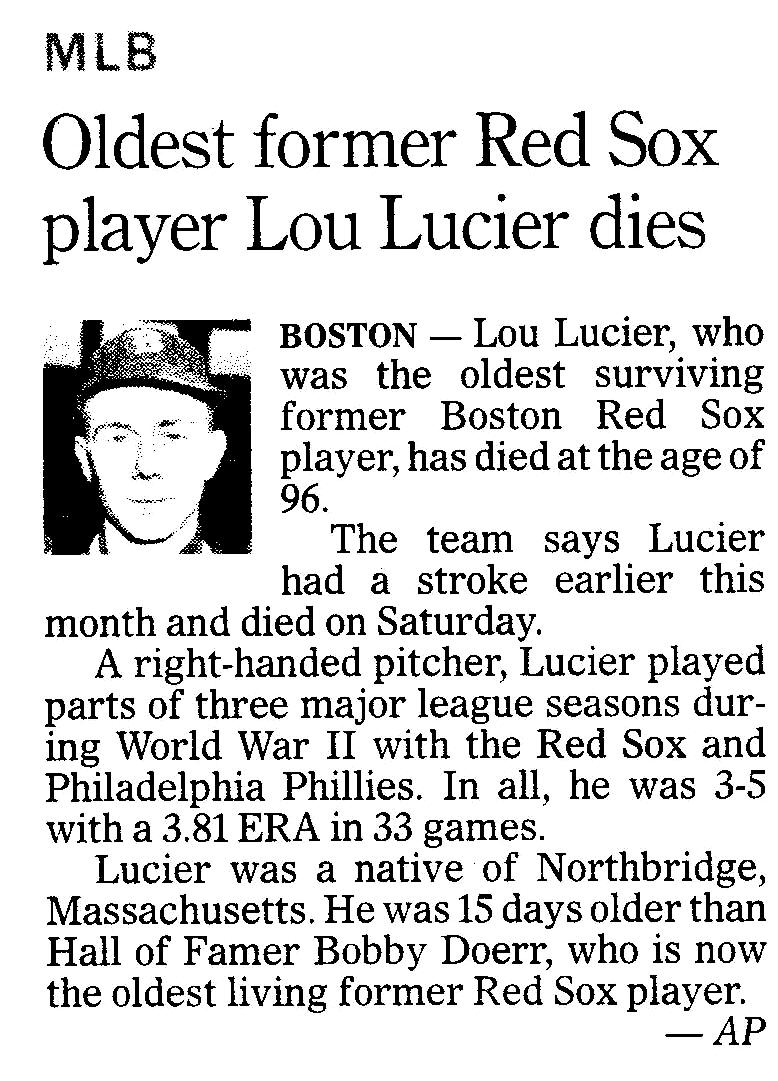
Associated Press Article
When Lou Lucier died, he got
credit as the oldest Red Sox player alive. But he also raced at Stateline
Speedway around 1955. Below -
Stan Timberlake is best known
in Maine as a ballplayer, as evidenced by this photo. But he was a darned good
Charger driver in that class's first season at Oxford Plains.
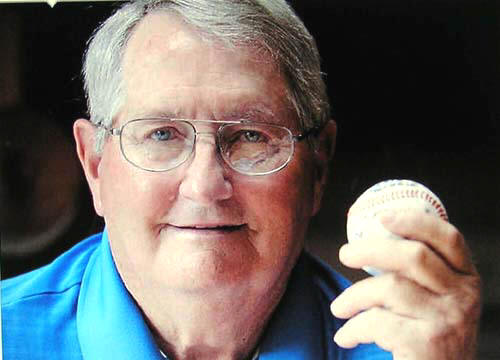
Unidentified Internet Source
We had a couple of very good support division drivers who were much better known
in their native locales as baseball stars. One, Stan Timberlake of Turner, ME,
had a short but successful career in the Charger Division at Oxford Plains
Speedway; I think he was that popular class's first track champion. Timberlake
had a plain white 1956 Ford six cylinder charger that simply had a big red apple
on both sides. That covered the fact he was sponsored by Turner Orchards and
that the car's number was zero. Timberlake would start charger races buried in
the back of huge fields and – along with rival, George McKay – would work his
way up to near the front every week. Stan was apparently an even bigger baseball
star in Maine.
The other, perhaps more famous driver was Waterbury, Vermont's Clem “Desperate”
Despault. Despault somehow caught the fancy of the young and well – heeled
entrepreneur Ken Squier, who had just built Thunder Road. According to Despault,
his first race car – a B Class Studebaker late model, was furnished by Squier.
Despault was described by one racing historian as a really first class baseball
player in his native Morrisville. Apparently that observer felt Despault's
baseball future was comprised by his love of racing.
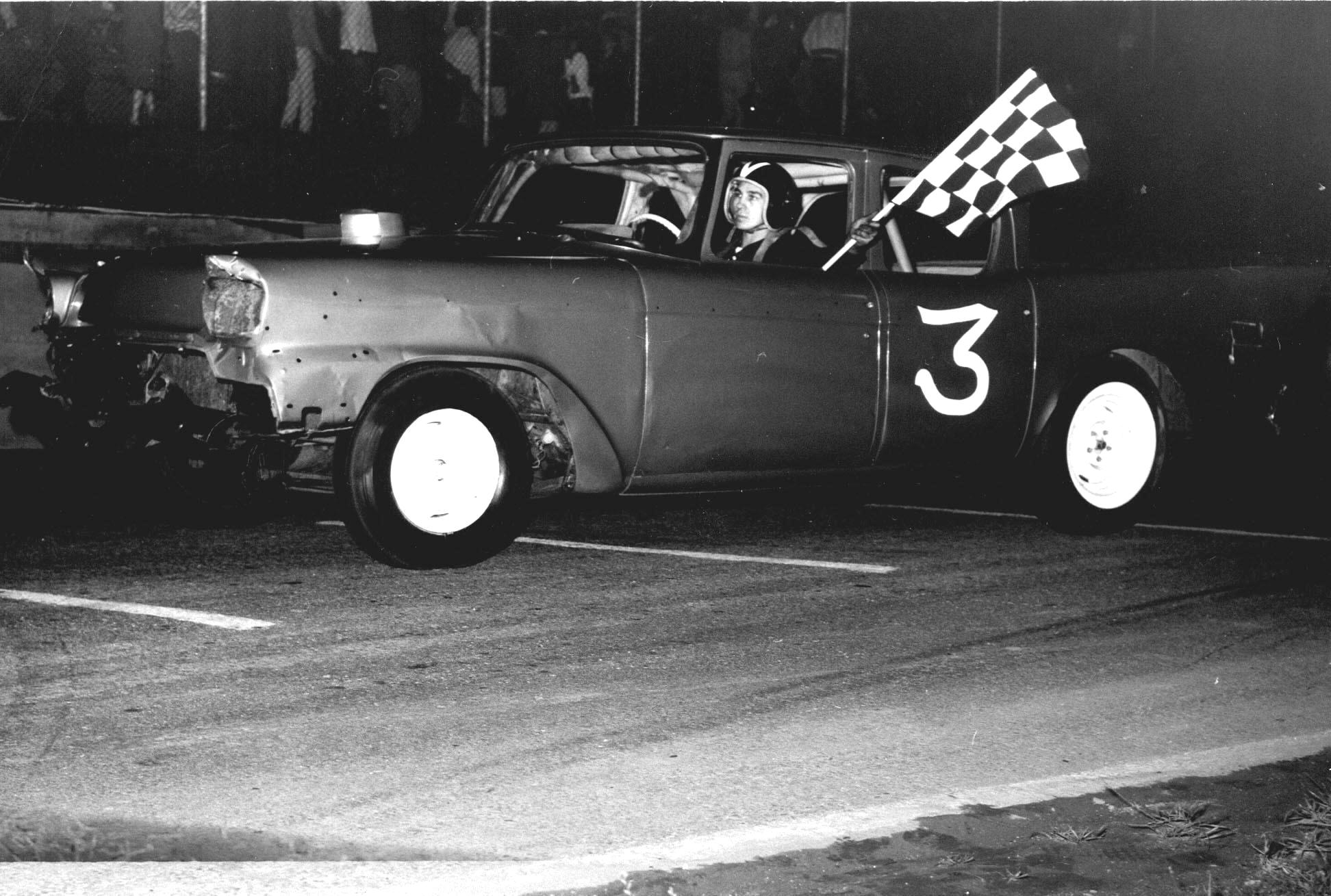
Courtesy of Outside Groove Website
Clem Despault with his first car, a
Studebaker from Ken Squier. Below- The familiar Despault Flying Tiger
Chevrolet he had, in varying but similar versions for years.
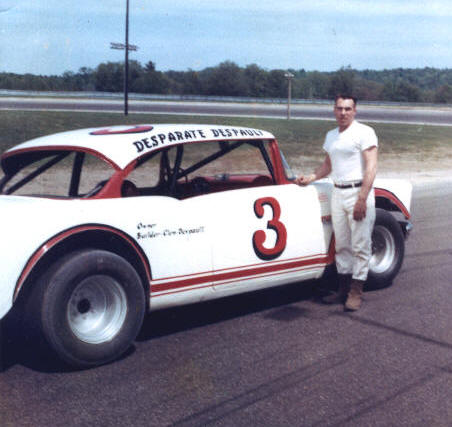
Courtesy of Rich Palmer
Clem would make a name for himself racing in the Flying Tigers, a class that was
one step up from the old B Class. The short, sturdy driver ran a white #3 Chevy
for years, and the number and colors became a trademark of sorts. Despault won a
Tiger title at Thunder Road in the late 1960's – no small accomplishment. He
would go on to field a Mopar when the circuit upgraded to late model sportsman
cars, but he never had the budget for success in an increasingly cash – oriented
sport.
After a brief stint in Bob Pratt's snazzy – but – too – heavy Chevelle, Despault
sort of disappeared for a few years. He re-emerged in the “New Flying Tiger”
division and ran there, with considerable success at times, until he finally
retired at age 74 in 2013 only to un-retire a year later. Even at that age, he
had a night at Thunder Road where he won his heat and a semi – feature in the
same night. It is arguable whether Clem's baseball abilities would have taken
him farther or not, but comments he has made to me indicate they wouldn't have
made him nearly as happy.
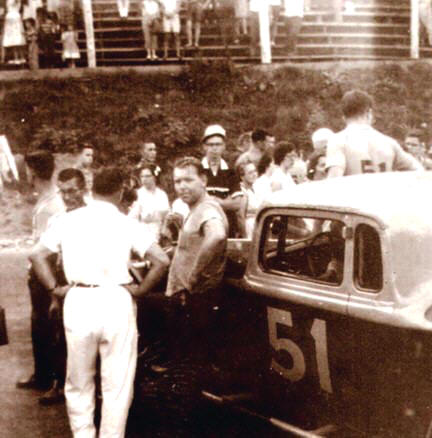
Courtesy of Mike Gilbert
Ed Pelletier with the Plymouth at
Dog River Speedway, Northfield. Doug is likely the guy with 51 on his back. I
don't know if Bovat is in the photo. Below – The first arrival at Catamount of
the Pelletier/Falzarano Chevy limited. Big hit !
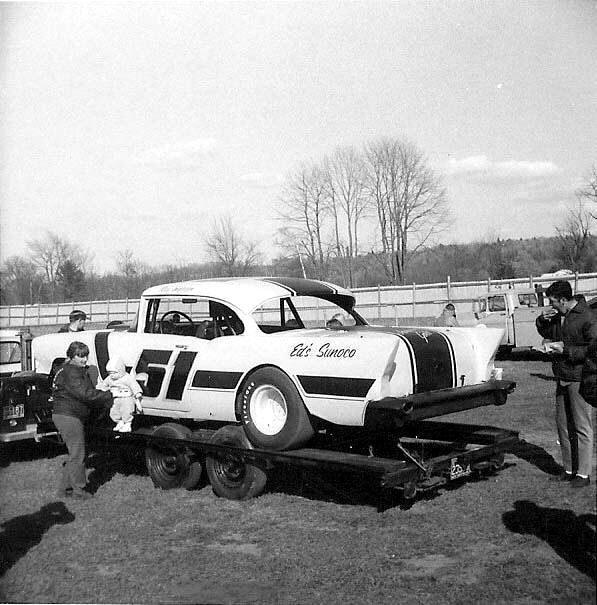
Courtesy of Steve
McKnight
Another baseballer who ended up in the game is Doug Falzarano. I first heard of
Doug not an tany race track, but rather at college. It turns out that the
Hartford, VT Legion team was one of the best in the region because of two
pitchers, the left – handed Larry Batchelder [my college friend] and the right –
hander, Falzarano. The Hartford team played against the New Hampshire team that
featured the Hall of Famer Carleton “Pudge” Fisk, later of Red and White Sox
fame. Both of those pitchers could handle him. Batch had letters from the Cubs
and the Tigers; Falzarano had his own collection of offers.
The problem was that Doug loved working with machines and motors, too. He
eventually damaged his right hand doing that work and the baseball dream was
gone. He would take up with the Hartford/White River Junction area's best racing
mechanics – Ed Pelletier and an older man named Don Bovat. A WWII veteran, Bovat
had worked on those powerful P-51 Mustang fighters and had learned how to be
very handy in machining engine parts. It was that experience of him and
thousands more that helped bring about the post – WWII boom in stock car racing.
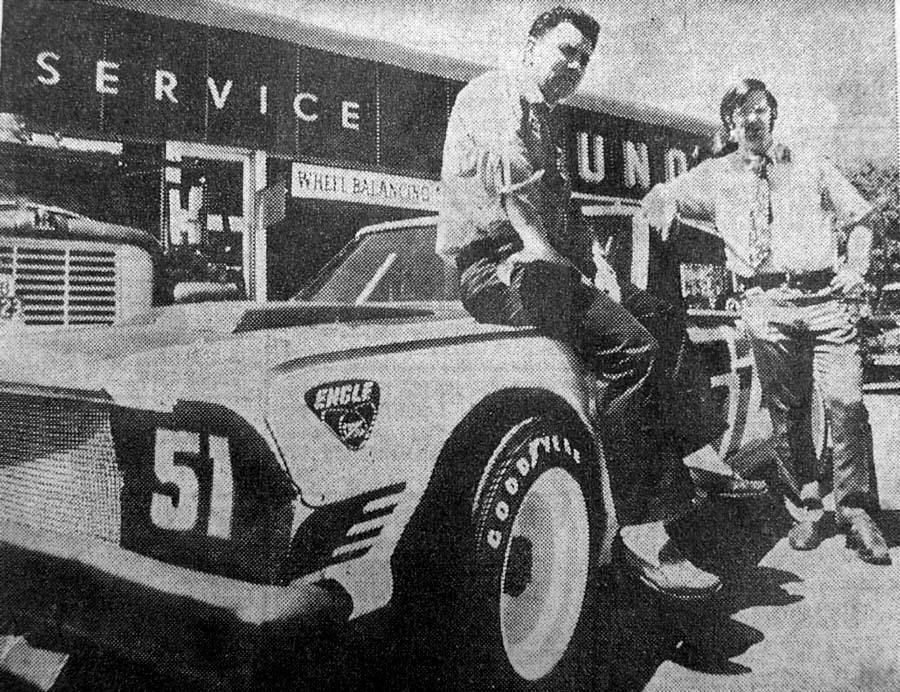
Courtesy of Cho Lee
Doug Falzarano [right]and
Jim Campbell with the new Chevelle. Below- The Rosati and Ingerson crews
celebrate winning the pole for some big race at Thunder Road. Doug is
fourth from right.
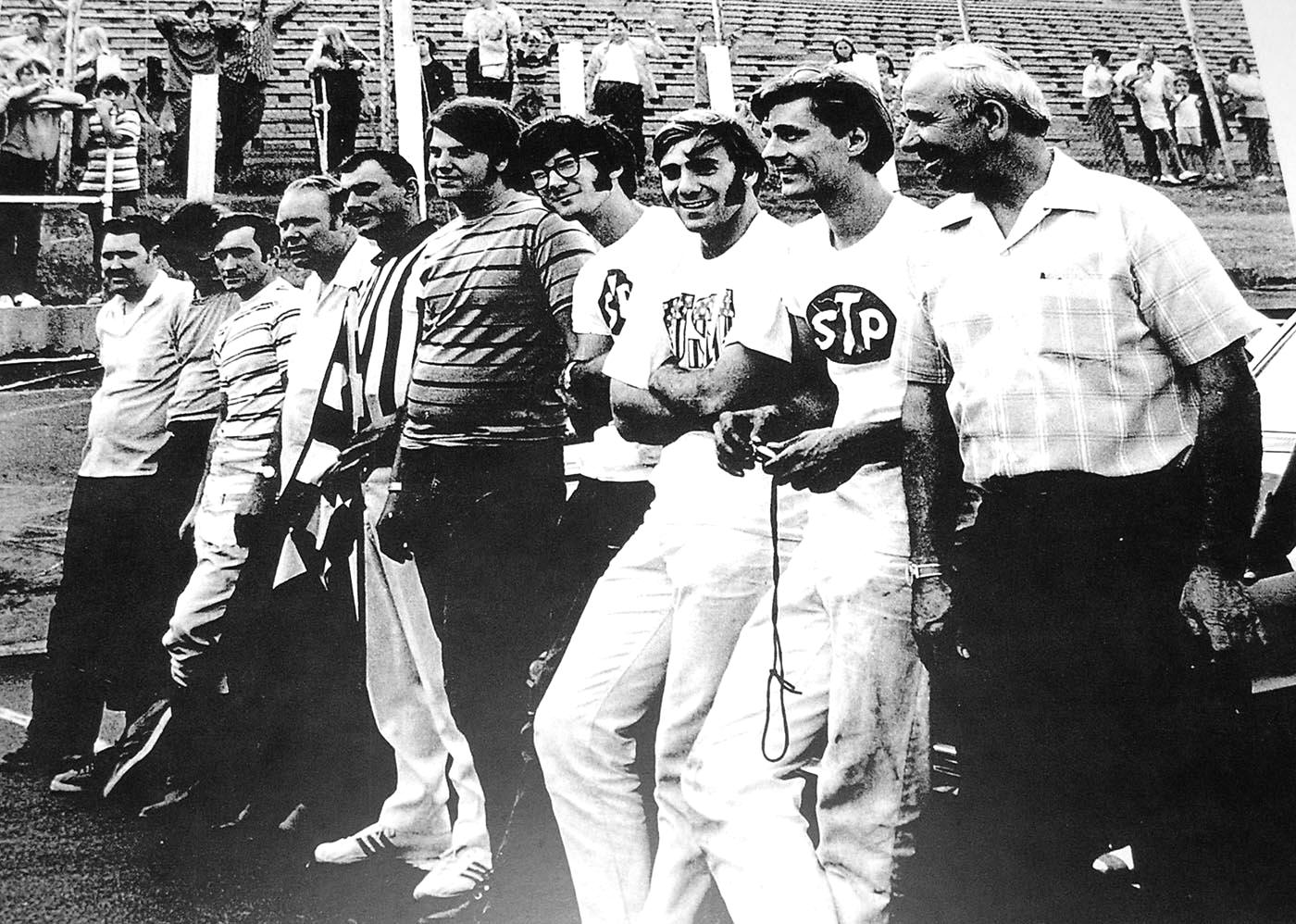
Courtesy of Cho Lee
Doug started out building flat head motors [probably for cars at Claremont
Speedway in New Hampshire; he was always under the watchful eye of Bovat. He
learned excellence in machining from Don and pride in car appearance and
handling from Pelletier, a local Sunoco gas station operator. They started
racing at venues such as Claremont, Northfield, VT, and more with Ed as the
driver. But, when he narrowly missed wiping out on the same tree at Thunder Road
that had all but killed Ray Stygles, Ed thought maybe he better hire a driver.
The car was something to behold.
Bovat had built special A Frame shocks for the original # 51, a 1934 Plymouth
and showed Doug some great stuff with the flat heads. Doug just couldn't get
enough of that stuff in those days. Falzarano claims some of those old cars
really went well back in the Northfield days. Guys like Ray Stygles [George
Hay's #68] and Roy “Pappy” Forsyth [George barber's 46] were top teams in that
time. Some of the Thunder Road cars would show up at Northfield's Dog River
Speedway once in a while. Pelletier's car did win the 1960 track championship
with Ed Pelletier driving. What Bovat did with the original '34 Plymouth A Frame
suspension, the shocks, and the rear springs gave that car an advantage. That
year, they ran a 6 cylinder Chrysler motor.
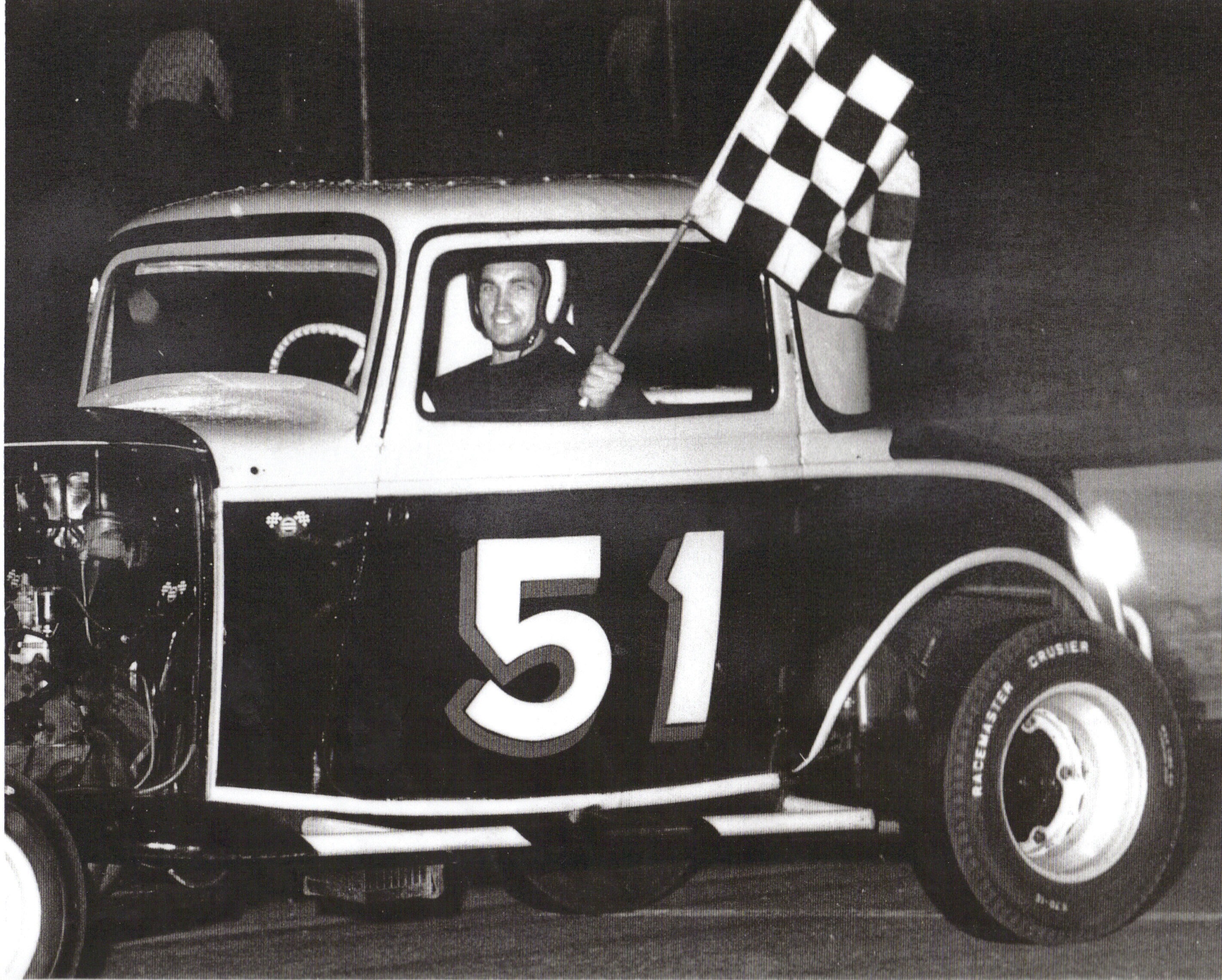
Courtesy of 176 Racing.Com Site
Russ Ingerson in his
first Pelletier / Falzarano car. Below – The Bateman modified – one of the
team's final products.|
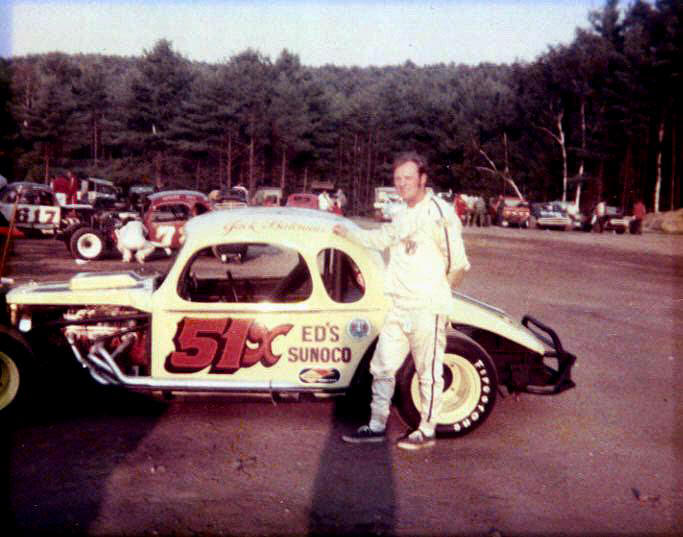
Courtesy of Cho Lee
Finally the 51 team made the
trip to Thunder Road. Ed got the bejeezus scared out of him there when he nearly
clocked the same tree that Ray Stygles did the year before [and that ended the
Stygles career and almost his life]. Ed and Doug decided that, if they were to
handle this faster and scarier track, they had better find a hired driver. The
car was so great, it wasn't a hard selling job.
The black and yellow, beautiful 51 became the ride for Russ, “The Wild Child”
Ingerson out of Littleton, NH. After success, with the coupe, the team built a
1957 Chevrolet limited late model sportsman as Northern NASCAR [Catamount and
Thunder Road] were upgrading from the Flying Tigers towards eventually running
full – fledged late model sportsman cars. The Chevy was a beauty and Ingerson
was a force on the circuit, thanks to Russ' driving and the mechanical expertise
of Pelletier and Falzarano.
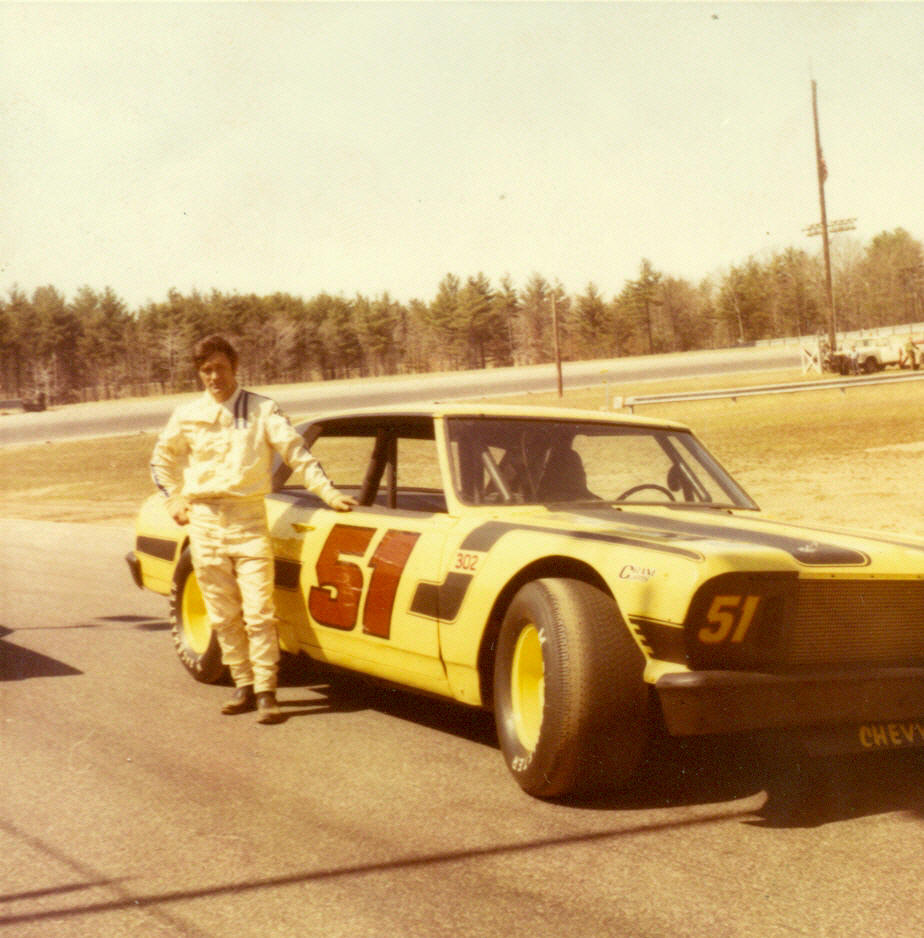
Courtesy of Steve Pecor
Russ with THE CHEVELLE.
The following year, they came out with “the Chevelle”. As Doug describes it, the
yellow and black 1964 Chevelle they fielded was unique. Doug wrote about the
Chevelle: “They
wondered how the hell that that old hand made Chevelle could whip their ass when
they, Rosati, Cabana etc etc., all had factory chassis and motors. The same with
the mods. We built our own to our specs even after we bought a factory frame and
cage we put in our geometry and links. It was the challenge to do something
different that would give us an edge.”
He wasn't
just blowing steam. I helped with a group that bought the car later and we never
could get out of it what they did.
Pelletier and Falzarano would
go on to field some modifieds for guys like Jack Bateman, and – like the cars
before – the mods were fast and beautiful to look at. Doug now like to reminisce
about those days, and wishes he could see one of those #51's again. I never
asked him, but I always wondered if he regrets not having a chance to try out
organized baseball
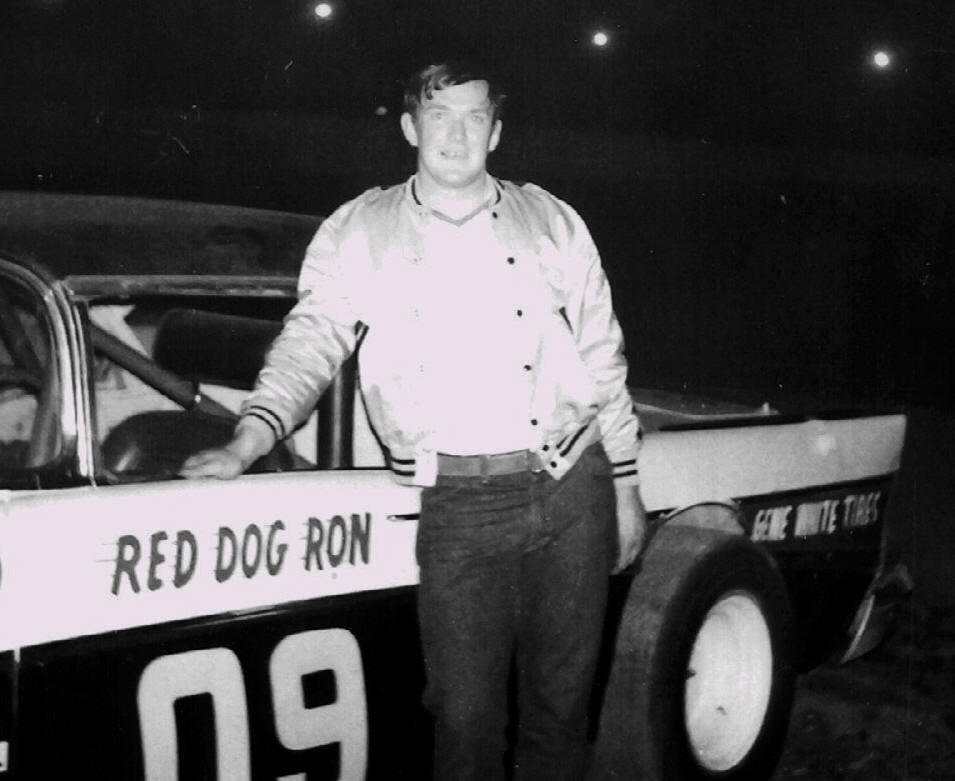
Ladabouche Collection
A very young Ron Barcomb
with his first Flying Tiger. Below – Things didn't always go well with
that Flying Tiger.
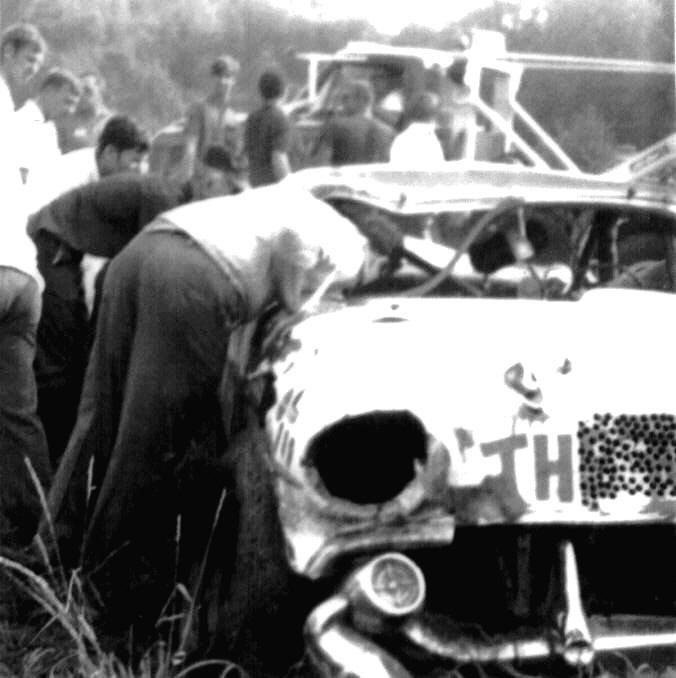
Courtesy of Terry LaFerriere
The last guy is 1970 Vermont
State Champion, Ron Barcomb, who starred for Winooski High School at least in
basketball and likely played other sports as well. From a big racing family that
had a salvage and good financial means, it was almost inevitable that Barcomb
would try racing. As known for his carousing the bars in Burlington as for
sports, the large youngster came out with a Flying Tiger in the mid 1960's.
Nicknamed Red Dog Barcomb after his favorite watering hole in Burlington, Ron
won his share of races in the Tigers.
In 1970, when the circuit
upgraded to limited sportsman, Barcomb switched his Chevy over to a 1961 Ford,
and won the Vermont State Championship, running against teams like Ingerson in
that #51 Chevy. Barcomb would run big – dollar Fords for a few more years before
settling back to the more popular Novas and Le Mans that most of the circuit
favored. He started to fade out of the racing into the 1980's – as much for
health reasons as anything else. It is almost certain that he would have never
achieved the notoriety he did in any other sport.
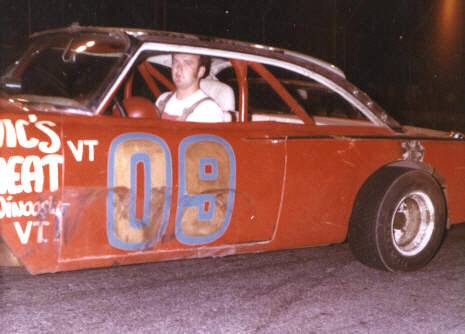
Courtesy of Rich Palmer
Barcomb's state
championship car, up close. Below – Easily , his most memorable car.
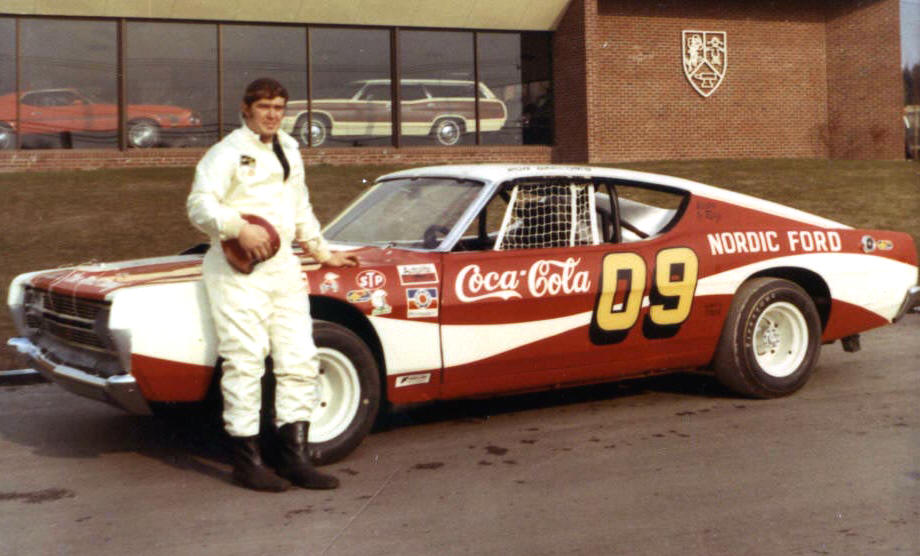
Courtesy of Rich Palmer
They all make a case for race car drivers being athletes as much as any other
sport.
Please email me if you have
any photos to lend me or information and corrections I could benefit from.
Please do not submit anything you are not willing to allow me to use on my
website - and thanks. Email is:
wladabou@comcast.net . For those who still don’t like computers - my
regular address is: Bill Ladabouche, 23 York Street, Swanton, Vermont 05488.
AS ALWAYS, DON’T FORGET TO CHECK OUT MY WEBSITE
www.catamountstadium.com
Return to the Main Page
Return to the Main News Page
Return to the All Links Page
Return to the Weekly Blog Links Page






